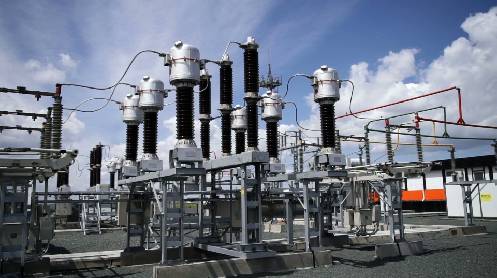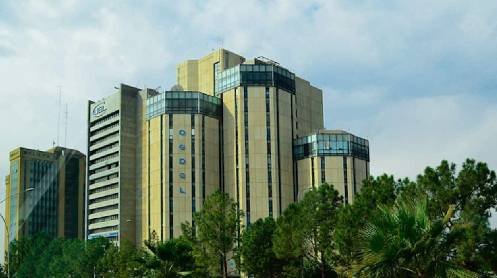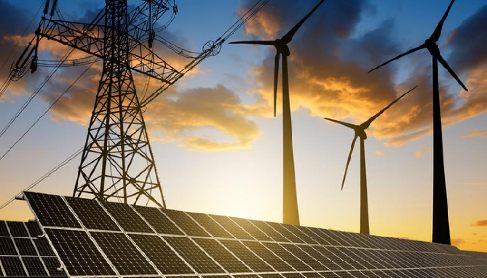The power sector of Pakistan has remained under severe stress for more than two decades. To fill the gap between supply and demand the government introduced three Power Polices in 1994, 2002 and 2015 and signed long-term agreements of up to 25 years with 79 IPPs (independent power producers).
According to a report by an inquiry committee headed by Muhammad Ali, former Chairman of the SECP (Securities and Exchange Commission of Pakistan) and now the Minister of Energy, IPPs earned 17% rate of return in US$ which at the time of submission of report in April 2020 worked out to 27% and now owing to adverse exchange rate, annual return in PKR has crossed 50%.
A review of two imported coal-based power plants established under the 2015 Policy revealed that one plant had recovered 71% of the investment in two years whereas the other had regained 32% of investment in only one year.
To reduce the dependency on thermal fuel, in 2015 the government decided to increase the share of renewable energy from 9% to 30% by 2030. Regrettably, following the same policies, the government again signed long-term agreements indexed to US$ with Solar IPPs.
At the same time to tap the Solar Energy, Nepra (National Electric Power Regulatory Authority) issued Net Metering Regulations whereby Roof-Top Solar Generator could sell the excess supply to the Discos at the National Average Power Purchase Price (NAAP) without any infrastructure costs and zero-line losses.
Net metering was first introduced in the US in 1969 and since then it is available in sixty countries. In most countries after sunset electricity meters run in reverse to offset the excess energy supplied during the day and balance if any, is carried forward and then finally adjusted in the monthly bills.
Additionally, to promote greenhouse gas emissions, some countries provide tax incentives. On the other hand,
Surprisingly, someone in the Power Division felt that since cost of electricity generated through Hydro and new Wind Power Plants is less than Rs 10 p/u, the NAPP of Rs 19.32 p/u by DISCOS from Net Metering consumers should be reduced.
Thus, upon receipt of a request from Power Division Nepra thought that it could be done simply by changing the word in its licensing Regulations from NAAP to NAEPPP (National Average Energy Power Purchase Price) and on 21st September 2022 issued a notice calling a public hearing on 27th September 2022.
Instead of performing its duty to educate customers about the pros and cons of the amendment, it can be seen from the video of the hearing available with Nepra that it took the side of Power Division and pressed extremely hard for an amendment. But to the Authority’s surprise participants, including this writer, were fully prepared to oppose this move both on account of promotion of Green Energy and the in terms of 7-years licenses it has been issuing to Solar Generators which are linked to NAAP.
It was argued that if the GoP is unable to renegotiate the terms of contracts with IPPs, which are indexed to US$, then why target Roof Top Solar Generators, who are being paid in PKR for a payback period of 5 to 7 years.
Prior to the public hearing and with quality research by a PIDE (Pakistan Institute of Development Economics) team, its Vice Chancellor Dr. Nadeem ul Haq led the webinar which concluded that Nepra’s move would not be in line with Government’s 2030 vision of Renewable Energy.
Whereas after the hearing Engineer Abdul Jabbar, who was also acting in public interest, managed intervention by the President of FPPC&I (Federation of Pakistan Chambers of Commerce and Industry) against this move.
Therefore, finally, on 10th of February 2023, Nepra decided against any amendment in the Net Metering Regulations. A decision signed by the Chairman and three members of the Authority stated that economic benefits of Net Metering in terms of displacement of costlier electricity, saving of foreign exchange and incurring minimal losses cannot be ignored coupled with a low quantum of less than 1% of Net Metering Units.
Through the recent report in media, it is perceived that having not reconciled with the Authority’s unanimous decision, Power Division this time without giving background of public hearing and Nepra’s decision has made a case that 1000MW of excess energy generated by Roof-Top Solar Panels costs it more than Rs 19.32 p/u it pays to Net Metering consumers because it also pays a significant amount to the IPPs in the capacity payment for not buying the same from the power generation companies.
Thus, without giving due importance to green energy as opposed to its earlier favour for harmful coal-based projects as well as ignoring of no infrastructure costs or line losses associated with exports of units to the Grid through Solar installations, it wants the Cabinet to approve reduction in NAPP from current rate of Rs 19.32 to Rs 9 through an ordinance which would be challengeable in the courts.
In view of the above, instead of paying attention to an irrational move by the Power Division, honourable Prime Minister and ministers of Finance & Energy are requested to consider following submissions:
- Net Metering Regulations may please be amended to provide adjustment of excess units supplied during off-peak hours with peak hours through running of reverse meters as it is prevailing in a number of countries.
This will to some extent compensate the Roof-Top Solar Installers for the lesser price compared with the CPPA rate, they are selling the units to the DISCOS. Also, at the same time it will discourage, on the one hand, the use of batteries which are unfriendly for the environment and on the other the government will save foreign exchange through reduced imports of batteries.
- With zero-line losses and no infrastructure costs associated with the export of Solar Units and given that Roof-Top Solar Generators having no nationwide platform to argue their case, they rely on Nepra for protection of their rights. Therefore, Nepra must periodically review the NAPP and its last revision of 14th July 2023 from Rs 19.32 to Rs 22.95 being illegally held in abeyance by the Power Division must be notified.
- Solar Generators be given an option to donate the excess units to needy people as well as to the mosques/madrasas and NGOs and at the same time as provided in the Net Metering Regulations, GST should be charged on Net Units as opposed to Gross.
- A sound long-term policy free from flawed as seen in previous power policies be introduced for manufacturing of Solar Panels and Inverters through joint ventures. Countries such as Turkey, India and Bangladesh are ahead of us, and we need to learn from their experience.
Since Russia’s invasion of Ukraine, for energy security countries in Europe have invested heavily in Solar. Chinese companies are working 24/7 and even during New Year holidays to cater for increasing demand of over 40GW of Solar Panels.
Just Spain added a record 4.5GW of solar capacity, registering an increase in solar energy output from 16% in July 2022 to 24% in July 2023.
According to a report published by Reuters on 7th August 2023, even in cooler and less sunny western countries such as Belgium, solar energy has covered more than 100% of the extra energy needed during midday spikes in power demand.
Pakistan is endowed with year-round sunny weather and therefore it is about time the Power Division, which due to its flawed polices has placed a huge burden of circular debt and capacity payments on the country’s economy, be stopped forthwith from interfering in the management of Renewable Energy.
Instead, it is hoped that the recently established Special Investment Facilitation Council (SIFC) will also include Renewable Energy in its scope so as to enhance the quantum of Net Metering from 1% to 10% in the next 3 to 5 years.





